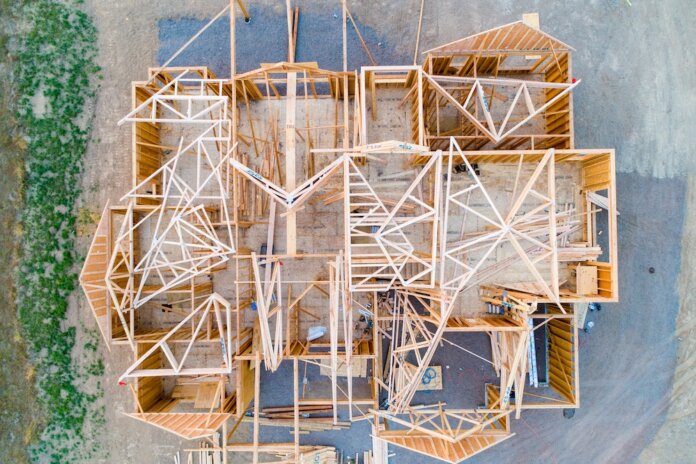By most measures, March was a bad month for U.S. housing starts, due mainly to stubborn inflation, rising rates and a Federal Reserve that is unlikely to cut the prime rate anytime soon.
Housing starts slowed to a seasonally adjusted annual rate of 1.321 million – down 14.7% compared with February and down 4.3% compared with March 2023, according to the U.S. Census Bureau and the U.S. Department of Housing and Urban Development.
Starts of detached, single‐family homes in March were at a rate of 1.022 million, down 12.4% compared with February.
Starts of multifamily properties (five units or more per building) were at a rate of 290,000, down 20.8% compared with February.
Building permits were slightly more positive. They were at a seasonally adjusted annual rate of 1.458 million, and while this is down 4.3% compared with February it is up 1.5% compared with March 2023.
Permits for single‐family properties were at a rate of 973,000, down 5.7% compared with February.
Permits for multifamily dwellings were at a rate of 433,000, flat compared with the previous month.
Housing completions in March were at a seasonally adjusted annual rate of 1.469 million, down 13.5% compared with February and down 3.9% compared with March 2023.
“Builders are grappling on several fronts as the inflation fight continues,” says Carl Harris, chairman of the National Association of Home Builders (NAHB), in a statement. “Higher interest rates are increasing the cost of housing for prospective home buyers and raising the development and construction cost for builders of homes and apartments. At the same time, shelter inflation is rising faster than overall prices due to supply-side challenges.”
“Single-family starts were down in March as interest rates increased and multifamily production fell as builders faced tighter financing conditions,” adds Danushka Nanayakkara-Skillington, assistant vice president for forecasting and analysis for NAHB. “And with single-family permits also down in March, single-family production will likely decline again in April.”
Odtea Kushi, deputy chief economist for First American, says the March housing starts data “signals a loss of momentum for single-family construction, but perspective is important – single-family groundbreaking is still up 21 percent compared with a year ago and is more than 20 percent above the five-year pre-pandemic average.”
NAHB’s Builder Sentiment Survey was flat in April as mortgage rates remained close to 7% over the past month and the latest inflation data failed to show improvement during the first quarter of 2024.
But as Kushi notes, NAHB’s builder sentiment index “remains above the break-even point of 50, indicating positive sentiment”
“The long-term housing shortage, coupled with a lack of existing-home inventory and builders’ ability to offer incentives has helped to buoy new single-family construction,” Kushi says in a statement. “However, builders continue to grapple with challenges stemming from the ‘five Ls’ – labor, lots, legal issues, lumber, and lending. ‘Higher-for-longer’ mortgage rates are also a major headwind for builders and potential home buyers alike.”
“Despite the challenges, the new-home market will likely continue to outperform the existing-home market over the near term because, unlike existing homeowners, builders are not rate locked-in,” Kushi adds.
The biggest problem continues to be lack of inventory. Kushi says while “estimates of this shortfall vary … the average estimate is the U.S. is undersupplied by approximately 3 million units of housing.”
“Currently, there are approximately 1.65 million units of housing under construction – apartments and homes,” she says. “Even if all of those units came to market tomorrow ready to sell or lease, we’d still likely have a housing shortage.”
Photo: Avel Chuklanov











